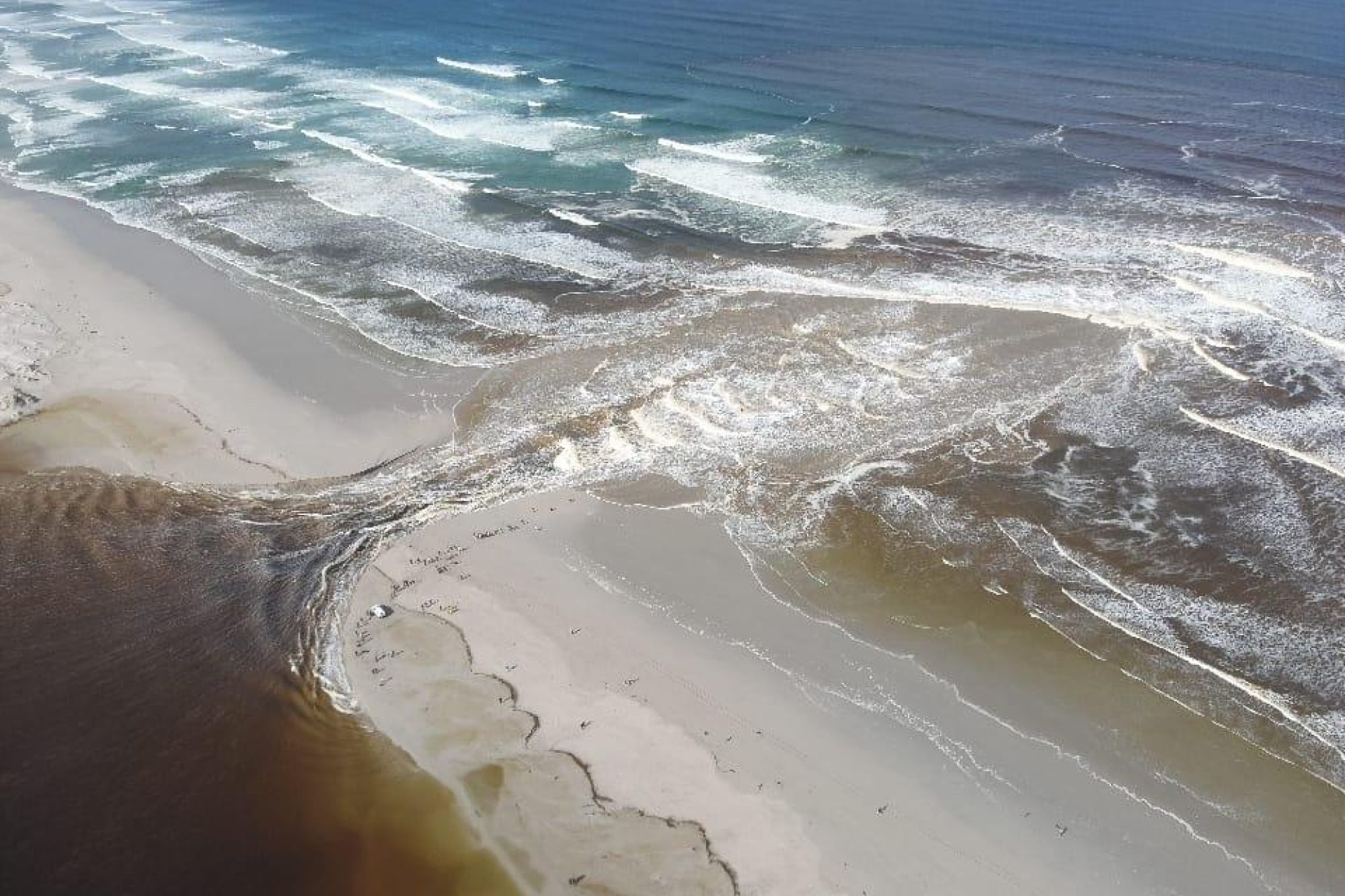
Rivers, Watersheds, and the Klein Estuary: A 2025 Natural Breach Event
Over millions of years, South Africa’s rivers and watersheds have evolved through the forces of erosion, rainfall, and shifting geology. A river catchment, or watershed, is an area of land where all surface water flows toward a single river, stream, or channel, eventually reaching the sea. Rainfall landing anywhere within the catchment is guided by the landscape’s slopes and contours toward this main watercourse. The sea, at zero elevation, becomes the final destination for these waters.
Freshwater flow from the highlands and mountains makes its way down rivers and streams, carrying with it sediment and nutrient-rich particles. As these flows enter estuaries, they deposit valuable nutrients and sediments into the ocean. This freshwater–estuarine–marine link is critical to ecosystem health, as it sustains coastal productivity and biodiversity. The mixing of freshwater and estuarine water creates a distinctive 'plume' in the ocean, which is a nutrient-rich zone that attracts many fish species. Some species use their acute sense of smell to locate the very rivers or estuaries in which they grew up, returning from the sea to spawn. Others complete their entire life cycle within the estuary itself.
Over time, these ecosystems have adapted to natural cycles of floods and droughts, with many estuaries maintaining a rhythmic opening and closing linked to seasonal rainfall and multi-year climate patterns. In the case of the Klein Estuary, historical cycles have shown a natural breaching, roughly every 20 years, although variations occur depending on rainfall.
Human Impacts on Estuarine Flow
In recent decades, human use of freshwater in catchments, for agriculture, industry, and domestic supply, has reduced the volume of water reaching estuaries and the sea. This has consequences for sediment delivery, nutrient transport, and the health of coastal fisheries. Recognising this, South Africa’s National Water Act requires that ecological reserve studies be conducted for each catchment to determine the minimum freshwater flows necessary to maintain ecological connectivity from rivers to the ocean.
For the Klein River catchment, the agricultural sector is the primary user of freshwater. However, when rainfall is sufficient, flows still reach the estuary in volumes that allow for natural filling and eventual breaching.
The 2025 Natural Breach
After good winter rainfall in 2025, the Klein Estuary filled to capacity. The morning of 13 August 2025, between 05:00 and 06:00, water levels reached their peak at the berm, initiating a trickle toward the sea. Within hours, this had expanded into a strong outflow, extending 2–3 km into the ocean. Walker Bay was coloured brown for much of the day due to suspended sediments, and by the next day, the nutrient-rich plume was flowing parallel to the coastline in a westerly direction.




This event drew large numbers of fish to the plume and provided an opportunity for estuary-dependent marine fish to migrate between habitats. Species such as sand and mud prawns also benefited, as the open mouth allowed them to complete their life cycles. Many species had moved into the estuary’s main channels in anticipation of the breach; a behaviour developed over evolutionary time to coincide with mouth openings.
Importance of Natural Breaching
Allowing estuaries like the Klein to open naturally is essential. It ensures maximum water depth at breaching, which in turn maximises sediment and nutrient transport to the ocean. Artificial openings, especially when done prematurely, can strand fish, disrupt breeding cycles, and lead to poor sediment flushing. Past artificial breaches have caused significant ecological harm, including loss of fish and bird populations.
CapeNature, in collaboration with the NGO Loon, Overstrand Law Enforcement, and private security companies, monitored the Klein Estuary daily for three weeks leading up to the opening. Patrols ensured that no unauthorised breaching occurred. The monitoring team also recorded water quality parameters, which included depth, salinity, dissolved oxygen, and temperature, to track changes before and after the breach.
Broader Ecological Connections
Now that the Klein Estuary is open, there is an opportunity to artificially open the nearby Bot Estuary, which rarely opens naturally due to its high sand berm. Co-ordinated openings would allow for the exchange of species between the two systems, including the endemic Bot River klipfish (Clinus spatulatus), pipefish, and various eel species.
Acknowledgements
A special thanks to all patrol members, conservation partners, and the public who respected the process, supported the natural breaching, and contributed valuable observations across various community platforms. The 2025 natural breach of the Klein Estuary is an indication of what effective environmental management, community co-operation, and the resilience of South Africa’s estuarine ecosystems can produce.




